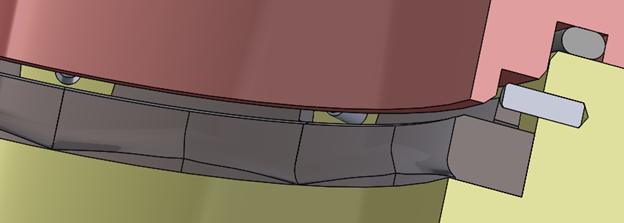In June of 2019 we reported on the successful testing of 3.00” (76.2mm) PN 701-10-11 rotary shaft seals in “reverse pressure” conditions where the pressure of the drilling fluid was 100-psi (6.89 bar) greater than the pressure of the seal lubricant. The objective was to determine if the new tanged seal design could exclude abrasives in reverse pressure conditions while avoiding circumferential slippage in the housing groove. Since the “reverse pressure” was already considered to be a difficult operating condition, those tests were conducted with very little dynamic runout.
Based on the success of those initial reverse pressure tests, we decided to evaluate the new PN 701-10-11 seal design with intentional shaft runout. Two tests were performed at 400 rpm (314 sfpm). The ISO 680 viscosity grade synthetic hydrocarbon seal lubricant was maintained at a bulk temperature of 162°F (72.2°C) The 100-psi reverse pressure was obtained with a 75-psi lubricant pressure and a 175-psi drilling fluid pressure. The drilling fluid was drained and replaced daily to avoid dilution.
The general seal testing arrangement is shown in Figure 1. The environment end of the PN 701-10-11 seal has molded anti-rotation tangs that are engaged by inexpensive radially oriented grooved pins (patent pending). A circular shelf that is located between the pins and the shaft prevents pin loss and supports the rotary seal during installation onto the shaft. As with all Kalsi Seals, the dynamic lip of the seal has hydrodynamic waves that pump a thin film of the lubricant between the lip and the shaft during rotation to reduce friction, heat, and wear.
One of the tests had 0.010″ to 0.012″ runout FIM and was stopped at 123.45 hours for seal inspection. The other test had 0.010″ to 0.011″ runout FIM and was stopped at 216.28 hours for seal inspection. As shown by Figures 2 and 3, both PN 701-10-11 seals were in excellent condition at the conclusion of the tests. Despite the “reverse” pressure, the PN 701-10-11 seals excluded abrasives better in conditions of shaft runout, compared to Kalsi Seals used in traditional lubricant overpressure conditions.
We also ran a 325 rpm, 162°F (72.2°C) test with approximately 0.010″ of runout and 15 psi (1.03 bar) reverse pressure acting from the drilling fluid side of the seal. When the test was stopped at 160.37 hours for seal inspection, the PN 701-10-11 seal was still in excellent condition (Figure 4).
Future testing will involve higher temperatures and pressures. Based on the excellent laboratory performance to date, compared to other seals, we believe this new rotary shaft seal design is ready for field evaluation. Contact us for additional information.




